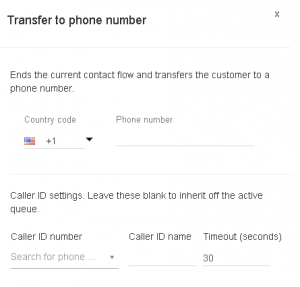Amazon Connect encourages callback usage instead of voicemail, to resolve a similar use case. In this article, we discuss callbacks and external voicemail services, as well as how to keep track of those calls.
Why do we use voicemail?
Let’s take a step back and think what is the use case voicemail solves. Often, voicemail serves as a mechanism to acknowledge a call and get back to a customer as soon as possible. Some examples include calls outside of business hours or calls to busy lines with no available agents and long queue wait times.
In some contact centers, agents are assigned with direct inbound numbers and dedicated voicemail lines. In Amazon Connect, inbound and outbound calls are handled through queues and shared numbers. As a result, any call that’s ringing an agent but is not answered within a designated time frame will simply ring another skilled agent.
But, what if customers need to wait for 10+ minutes in a queue? What can we offer, to ensure we get back to them in a timely manner?
What are some options?
1. Callback
Callbacks are advantageous to classic voicemail services as a caller’s place in a queue is preserved. Any contact will be assessed automatically in the order it came in unless priorities are configured differently. In contrast, voicemail messages need to be reviewed at a scheduled time. Agents need to plan to return calls. So, how to make sure a call back does not get pushed in priority over other incoming contacts? Callbacks ensure customers get a return call as soon as an agent is available to handle that request. As a result, resolution speed may be improved.
Also, callbacks allow for a similar call experience, both on the customer and agent side. Callers can still go through a personalized Amazon Connect contact flow and receive a custom experience. Agents can also get their help data pulled in, in the same manner as they get for other queued calls. If agents have to manually dial a customer based on a voice mail, that extra context won’t be automatically available.
With callbacks, it is important to plan for adjustment time, as people need to get used to a different approach. So, it’s advisable to try this with smaller agent groups and a limited number of customer queues. Afterward, evaluate if the change was well accepted by asking for feedback and measuring trackable stats.
If you’d like to try callback functionality, see here for tips on configuring callbacks in Amazon Connect.
Callbacks may work well for some business flows, however, it may not fit well into others. There are some other options in the event voicemail service is a must.
2. Transfer to an external voicemail service
Avoid Contact Center Outages: Plan Your Upgrade to Amazon Connect
Learn the six most common pitfalls when upgrading your contact center, and how Amazon Connect can help you avoid them.
Using Amazon Connect Contact flow editor, it’s possible to transfer calls to external numbers.
Transfer can occur based on different conditions, for example, if queue wait time is longer then XX seconds, the caller can be offered to press X to get transferred to voicemail. Other conditions can include hours of operation, queue capacity, etc.
The transfer approach suggests a need for a third-party voicemail service. Least-amount-of-effort solutions include getting a subscription to a cloud voicemail offering or keeping an existing voicemail system.
3. Transfer to a custom built voicemail service
There are a couple of platforms that allow building a custom voicemail service (like Twilio). It’s more time-demanding but more budget-friendly than option #2.
How to flag VM calls for reports in Amazon Connect?
1. Voicemail Contact Attribute
Flag any calls that take the voicemail route using the “Set Contact Attributes” block; provided your use case allows for that.
Contact attributes will show up in Amazon Connect contact trace records (CTRs). In addition, to create more robust reporting, pipe out the CTR data using Amazon Kinesis to a storage of your preference.
2. Track call transfers after X seconds
Note: this approach only shows an estimated count of calls transferred to VM.
Amazon Connect offers out-of-the-box historical reporting on calls abandoned after X seconds. So, any time a call is queued but it does not reach an agent it will be treated as abandoned. Usually, callers will either hang up early in the IVR, let’s say after 10 seconds, or won’t hang up at all. So, to get a rough estimate of calls transferred to VM, we can subtract calls abandoned after 10 seconds from calls abandoned within X seconds. For example, X can be 60 if we expect the transfer to VM to happen within one minute in the IVR.
This approach is only an estimate and may help to get rough numbers during a testing phase. However, for more precise numbers check back on section #1.
For more information, please feel free to reach out to us here.



